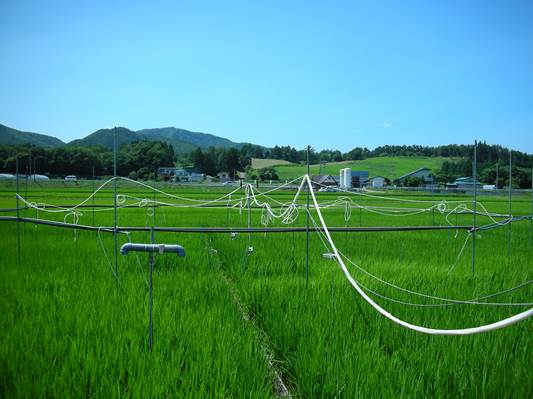Increased carbon dioxide levels in air restrict plants’ ability to absorb nutrients

Rice in Japan Photographer: Kazuhiko Kobayashi
Researcher Johan Uddling has been working with Swedish and international colleagues to compile data on how raised levels of carbon dioxide impact on plant growth and nitrogen absorption.
Plant quality impaired by increased carbon dioxide levels
The study examines various types of ecosystems, including crops, grasslands and forests, and involves large-scale field experiments conducted in eight countries on four continents.
“The findings of the study are unequivocal. The nitrogen content in the crops is reduced in atmospheres with raised carbon dioxide levels in all three ecosystem types. Furthermore, we can see that this negative effect exists regardless of whether or not the plants’ growth increases, and even if fertiliser is added. This is unexpected and new,” says Johan Uddling, senior lecturer at the Department of Biological and Environmental Sciences at the University of Gothenburg.
Significance of food quality, biodiversity and productivity
When carbon dioxide levels in the air increase, crops in future will have a reduced nitrogen content, and therefore reduced protein levels. The study found this for both wheat and rice, the two most important crops globally. The study also reveals that the strength of the effect varies in different species of grassland, which may impact on the species composition of these ecosystems.
“For all types of ecosystem the results show that high carbon dioxide levels can impede plants’ ability to absorb nitrogen, and that this negative effect is partly why raised carbon dioxide has a marginal or non-existent effect on growth in many ecosystems,” says Johan Uddling.
Accepted “truths” do not hold
Reduced nitrogen content in atmospheres with raised carbon dioxide has previously been attributed to a kind of dilutive effect, in which nitrogen absorption fails to keep pace with the increase in plants’ photosynthesis and growth.
“The findings of this study show that this interpretation is simplified and partly incorrect. We are seeing reduced nitrogen content even when growth has not been affected. Moreover, the effect is there in trials with powerful fertiliser, which indicates that it is not down to limited access to nitrogen in the soil. Future studies should look at what is causing the effect, but it appears to be linked to plants’ capacity to absorb nitrogen rather than to changed levels in the soil,” says Johan Uddling.
Link to article: http://onlinelibrary.wiley.com/doi/10.1111/gcb.12938/abstract
For further information, please contact:
Johan Uddling, senior lecturer at the Department of Biological and Environmental Sciences, University of Gothenburg
+46 (0)31-786 3757, 073-8267104, johan.uddling@bioenv.gu.se
Weitere Informationen:
http://science.gu.se/english/News/News_detail//increased-carbon-dioxide-levels-i…
Media Contact
All latest news from the category: Ecology, The Environment and Conservation
This complex theme deals primarily with interactions between organisms and the environmental factors that impact them, but to a greater extent between individual inanimate environmental factors.
innovations-report offers informative reports and articles on topics such as climate protection, landscape conservation, ecological systems, wildlife and nature parks and ecosystem efficiency and balance.
Newest articles

Superradiant atoms could push the boundaries of how precisely time can be measured
Superradiant atoms can help us measure time more precisely than ever. In a new study, researchers from the University of Copenhagen present a new method for measuring the time interval,…

Ion thermoelectric conversion devices for near room temperature
The electrode sheet of the thermoelectric device consists of ionic hydrogel, which is sandwiched between the electrodes to form, and the Prussian blue on the electrode undergoes a redox reaction…

Zap Energy achieves 37-million-degree temperatures in a compact device
New publication reports record electron temperatures for a small-scale, sheared-flow-stabilized Z-pinch fusion device. In the nine decades since humans first produced fusion reactions, only a few fusion technologies have demonstrated…





















